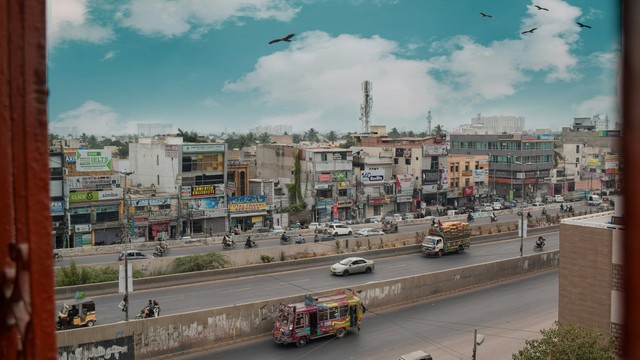Why urbanisation matters in responding to humanitarian crises
While the plight of Syrian refugees trying to get to Europe is grabbing attention, far more are living in cities and towns in the region. IIED hosted a recent workshop to look at how their needs can be best met.


Recent weeks have seen the Syrian humanitarian emergency grab the headlines. But as attention is focused on the individuals and families who have reached or are trying to reach Europe, the plight of the huge number of refugees living in towns and cities that already struggle to meet the basic needs of their residents should not be neglected.
IIED and partners hosted a workshop in Istanbul to learn about the experiences of international agencies, non-government organisations, and municipal governments in the Middle East and North Africa in responding to the needs of these refugees.
This is part of a broader programme of work to develop better approaches that link the efforts of humanitarian, development and urban actors to respond to urban humanitarian crises caused both by disasters and by conflict.
Neighbouring countries
Most Syrian refugees remain in neighbouring countries: more than 1.9 million are currently registered in Turkey, 1.1 million in Lebanon, 630,000 in Jordan, 250,000 in Iraq and 130,000 in Egypt. The fact that these are only the people who are formally registered means that the actual numbers are likely to be much larger. And this is in countries that already host large numbers of long-term refugees and displaced people.
In contrast, the UK government has indicated a willingness to accept just 20,000 Syrian refugees over the coming four years, and has stated that these will be people who currently reside in camps.
But many of these refugees live in towns and cities, and not in formal camps – meaning that this humanitarian crisis is increasingly an urban crisis as well. The proportion of Syrian refugees in Turkey living outside of camps rose from 57 per cent in May 2013 to 74 per cent in September 2014. While not all of these 'non-camp' refugees will have settled in urban centres, a substantial proportion will have done so.
Similar patterns are found in the other main host countries – there are 328,000 Syrian refugees in Beirut alone and 168,000 in Amman. These are towns and cities with limited capacity to provide basic services for their existing inhabitants, let alone these new residents: as one example, a breakdown in the rubbish collection system in Beirut has resulted in the stench of garbage in the streets and the release of toxic gases from the burning of trash.
The urban dynamics
Recognising and understanding the urban dynamics of this refugee crisis is important for several reasons. First, humanitarian crises of various kinds increasingly take place in cities. People increasingly prefer to move to cities – where despite difficulties in obtaining shelter and basic services, there remain more opportunities to earn money independently and live more 'normal' lives.
Given the high costs of running refugee camps – the camp at Zaatari in northern Jordan that is home to more than 80,000 people is estimated to cost the international community more than USD $500,000 per day to run – there are also sound economic reasons for supporting refugees in existing urban centres.
Second, the sheer number of people involved has caused rapid urban expansion in many areas. For example, the town of Mafraq in Jordan has seen the number of refugees treble its population to 245,000. These types of numbers represent a form of rapid densification (and in some cases urbanisation) that is poorly understood, and poorly served by the necessary infrastructure to support thriving economies and communities.
Adapting responses
Humanitarian agencies are having to adapt their tactics rapidly for identifying refugee communities in urban areas and working with them. Previous 'supply-based' systems of providing food, water and shelter don't work in cities that are characterised by dense populations, complex economies, and a reliance on networked infrastructure for basic services.
One solution being tried is to provide cash and e-vouchers to enable refugees to choose how best to fulfil their own needs, while at the same time supporting urban markets and the people who rely on these. It also allows agencies to focus on the integrated needs of a given area rather than on individual sectoral responses.
Agencies are also supporting efforts to ensure that host and refugee populations can live harmoniously with each other, recognising the pressures that have been put on already stretched health, education and other social infrastructure.
Understanding and responding to these dynamics is still at an early stage, but several key lessons are emerging. These are directly relevant to the ongoing situation in Syria, but bear broader relevance as well:
- The international community needs to recognise the extent to which refugees are hosted in cities, and to adjust its support accordingly
- Municipal governments and other urban stakeholders in Turkey, Lebanon, Jordan, Iraq and Egypt need to be supported in meeting the needs of these new residents, alongside the many citizens who are already disadvantaged for other reasons
- Humanitarian actors can learn from innovative practices in urban development driven by low-income and other marginalised groups, including in low-cost and self-help shelter, in cost-effective and decentralised systems to provide basic services, and in efforts to increase accountability of local and national government to all residents, and
- Researchers need to analyse the overlaps and tensions between urban planning and humanitarian principles and approaches, and to document empirical examples where the two agendas are being effectively integrated.
David Dodman (david.dodman@iied.org) is acting head of IIED's Human Settlements Group and team leader for cities and climate change.
Note: this blog was informed by discussions at a workshop hosted by IIED and the International Rescue Committee as part of a work programme on urban humanitarian crises.



